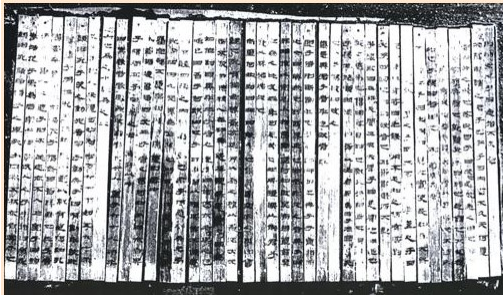4.10: Early Proto-states in the Peninsula + Manchuria
- Page ID
- 135175
Farthest north, in the Sungari River valley of Manchuria, was Puyŏ, which had formed in reaction against expansion by the state of Yan in about 300 BC.18 Once the commanderies were set up in 108 BC, Puyŏ allied with Han. Some tribes confederated to oppose the Han-Puyŏ alliance, forming Koguryŏ around 37 BC. Koguryŏ King T’aejo (53-146?) later expanded his territory, subjugating the Okcho tribes on the eastern coast of the peninsula. But as he conquered new territories, he left the chiefs in place to rule the local people; he did not create a centralized state.
To the south were three loose confederations dating back to about 100 BC: Mahan, Chinhan, and Pyŏnhan: together, the Samhan (“Three Han” 三韓). Mahan’s 54 named towns lay immediately south of the Lelang commandery, on the western coast of the peninsula. It had the richest farmlands. Chinhan’s 12 towns lay on the southeastern coast, and Pyŏnhan’s dozen towns clustered at the southern end of the peninsula. The walled towns of the three confederations held about 500-1000 households (2500-5000 people). Each town’s hinterland of fields (growing millet or rice) and wilderness averaged about 22 miles in diameter, roughly onefifth of the area the late Shang kings had directly controlled.

The chief of each tiny town or “statelet” governed independently. Many were wealthy enough to be buried with bronze belt hooks and mirrors, acquired through trade with the commanderies, as well as iron objects. By about AD 150, the towns were rich enough to lure immigrants from the commanderies (as we know from their wooden-chamber style tombs), whose expertise furthered economic development and political consolidation. The Samhan chiefs sought and welcomed recognition from the commanderies, in the form of seals and official robes and caps. Chiefs could display those status symbols to increase their social status over their neighbors, and recognition from Han meant the right to trade in the commanderies.19
Not long ago, King Kwanggaeto’s stele of 414 was the earliest extant Korean text. As archaeology progresses, however, earlier writings are being excavated, including wooden or bamboo strips or tablets called 木簡: mujian in Chinese, mokgan in Korean, mokkan in Japanese. The first such texts are from the Han colonies in the northern peninsula. Most record population, such as a census of Lelang Commandery for the year 45 BC showing that under Han dynasty command there were 280,000 people in 45,000 households. But two excavated tombs have 76 Chapter 4, p.20 yielded parts of the Analects (books 11 & 12). One of the tombs held a Han royal prince, Liu Xiu, who died in 55 BC. The North Korean government has not revealed the details of the second tomb, which held 39 strips of Analects, shown here:20

The writing in the population registers is mainly Chinese characters, but the characters are used to represent Korean language in complicated ways. Aspects of Korean grammar appear alongside Chinese grammar, characters are used to represent sounds rather than the words they represent in Chinese, and Korean characters are created by combining or reducing Chinese characters. The later peninsular kingdoms of Silla and Paekche developed different methods of notation, and both influenced Japanese writing: Paekche before 660 and Silla thereafter.21


